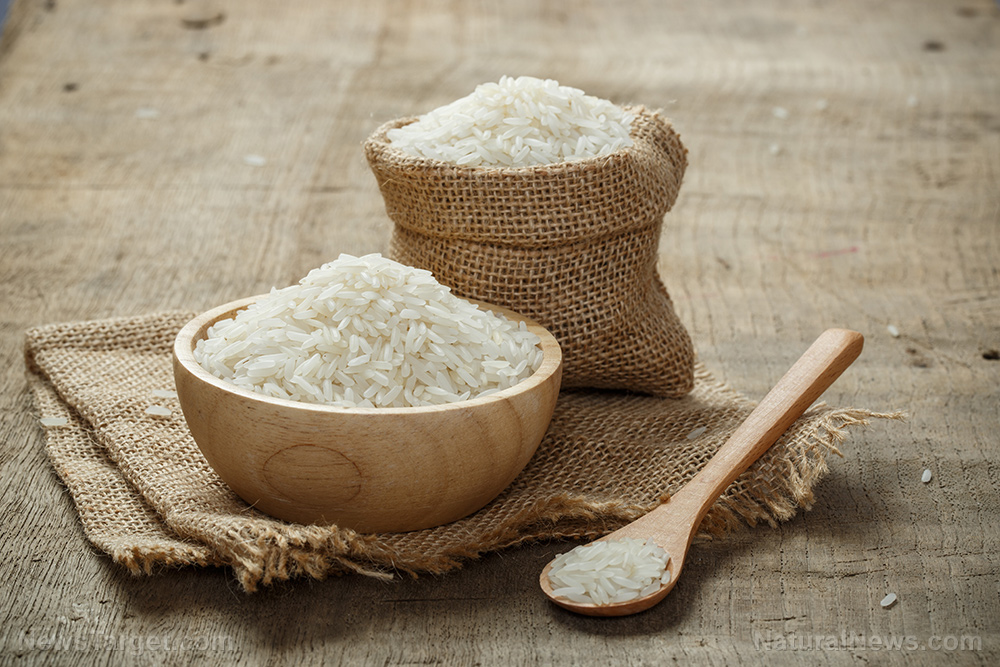5 Tips for safely foraging nutrient-dense food
09/13/2022 / By Zoey Sky

When SHTF, having a stockpile full of food and supplies can help you survive a disaster. But what if your supply runs out or you’re forced to bug out?
Knowing how to forage for wild edibles like berries and nuts will help you survive when you lose access to your trusty survival stockpile. (h/t to Survivopedia.com)
Here are five tips on how to forage safely for nutrient-dense food after disaster strikes.
Look for the nearest source of water
Learn how to forage properly so you can identify wild edibles and spot poisonous plants. If you’re not sure which plants are safe to eat, take hints from wild animals. These creatures can lead you to water and many nutrient-dense foods that often grow along waterways.
When SHTF, you will benefit from having equipment like a boat if you live in the frozen north. However, you might have trouble locating forage aside from pine needles and frozen fruits still clinging to trees if it’s January in Alaska.
If you’re in dire need of food during winter, learn how to fish like the Eskimos. Learn about ice fishing so you can find food amid the cold winter.
When going ice fishing, head out with a friend for safety. If you’re bugging out alone, learn how to use a pick for ice fishing.
Fortunately, fishing is a bit easier during the warmer months. When catching fish, you need to reconsider what you know about fishing. While you can fish with a rod and reel, for the long term you will need something that doesn’t require constant supervision.
Read up on passive fishing so you can skillfully prep your fishing gear and come back to check what you’ve caught.
You also need to know how to find a reliable fishing spot. Ideally, you need a place where you can collect fish and keep them alive until you’re ready to cook them.
Here are different methods you can use for passive fishing:
- Fish traps
- Fishweir
- Gorge hooks
- Hand fishing
- Nets
- Spearfishing
- Striking
- Trotlines
Once you’ve learned a passive fishing method that works for you, head to the best places to fish in a survival scenario:
- Ponds on farms, natural reserves, parks or golf courses
- Rivers
- Streams
Fish are rich in lean protein and omega-3 fatty acids that are essential for your heart and neurological health. Sufficient intake of omega-3s can help reduce your risk of heart disease and stroke.
If you need food other than fish, you can also look for nut trees along waterways. Walnuts on the tree look like green apples and are a delicious source of plant-based protein. Acorns are a great snack when roasted in a pan over the campfire.
Grains can also be found near waterways almost anywhere in the country. Look for cattail plants. Almost all of their parts are edible.
Look for reed grass if you need something that can be used to make flour. Use watercress to make salads, sandwiches and soups.
Look up edible plants in your area
Before things go south, read up on wild edibles native to your state. Learn how to identify them properly so when SHTF, you can harvest edible wild plants and avoid poisonous lookalikes.
Learn about the “Great White North”
Fishing ensures that you can get enough protein and healthy fats during winter. But you can still go hungry even with sufficient caloric intake if you lack other nutrients.
When SHTF, you can up your vitamin C intake with pine needles. Vitamin C helps prevent colds and boosts your immune system. You can also use pine needles to make a nutritious tea that can help prevent scurvy and seasonal flu.
Nuts and seeds are also full of nutrients. You may find some like pine nuts, which contain healthy fats, during winter.
While many green shoots are scarce after the first snowfall, you can still find root veggies. Check for remnants of the last of the season’s beets, potatoes and winter squash.
For fruits, check trees for stray apples on the branches of the latest-blooming trees (Related: 5 Medicinal mushrooms you can grow in your home garden or forage in your backyard.)
Research wild edibles in temperate forests
Temperate forests are a treasure trove for foragers who know what to look for.
Look for wild lettuce, which is spikier compared to lettuce from the grocery store. The former is also rather bitter, but it’s a great source of beneficial phytonutrients. Wild lettuce is also used to relieve chronic pain.
If you find dandelions, you can use them to make homemade wine. All parts of the dandelion plant are edible:
- Use dandelion greens for salads.
- Dandelion greens can also be sauteed to get rid of some of the bitterness. Add sauteed dandelion greens to pasta or scrambled eggs.
- Dandelion flower heads can be battered and fried to make dandelion fritters.
- Use dandelion roots to make coffee or tea.
Purple chicory is another great coffee substitute. You’ll also find berries during the summer so gather them at their peak and save them through drying or preserving. Elderberries can be used to make winter cold remedies and homemade wine.
Look up plants you can forage for in prairies
Many plants found in temperate woodlands are also common in the prairies, but you need to look harder. If you’re searching for stray patches of burdock and purslane, go deep in corn rows.
When you need grain, learn how to forage for amaranth. This plant is beneficial because its leaves can be used as a salad green.
Amaranth seeds can be used to make a nutrient-rich flour that is safe for people with celiac disease.
Since grain crops blow in the breeze, you might find corn in abundance. If you’re worried about being accused of stealing, look for corn that’s growing outside of farmers’ fields.
For edible flowers, check amid grains for coral honeysuckle, wild mustard and wood sorrel. These brightly colored edible flowers can be consumed raw or brewed into tea.
Research wild edibles in the desert
Even the desert can be a food source for foragers when SHTF. Chia seeds, a natural plant-based source of omega-3s, are common in the desert during spring.
Mesquite seeds look like pea pods but you can use them to make gluten-free flour when dried and pounded.
Prickly pear fruit can be preserved if you need to lower your blood pressure. Prickly pear leaves are also edible after you carefully remove their spines.
The desert is also home to low-growing plants of the plains like burdock, purslane and wood sorrel.
Considered the goji berries of the desert, wolfberries are full of antioxidants. Forage for mullein if you need a natural cold remedy.
Learn about edible insects
If you’re desperate, you can also turn to an unlikely food source after SHTF: edible insects.
The thought of eating bugs might make your skin crawl, but many people around the world consider insects a valuable food source.
Avoid foraging insects from cultivated areas that might be treated with toxic chemicals. If you find beetles, bake them in the oven, crush them and sprinkle them over vegetable soup to give your dish a protein boost.
Learn how to hunt
Animal-based foods are great sources of protein and nourishing fat that will help you stay warm during winter.
It’s best to hunt with a gun, but if you don’t have a firearm, you can also hunt using traps.
Learn how to set up a simple rabbit snare with rope and a piece of sapling. Rabbit meat is great for rich, nourishing stews. Use rabbit skin to make hand or foot coverings or a new hat.
Preserve what you forage
If you have luck when foraging and end up with more food than you and your family can eat, you can preserve them using these methods:
- Canning
- Cold storage
- Drying and dehydrating
- Fermentation
- Pickling
- Salting
Before SHTF, learn how to identify wild edibles like nuts and berries. Familiarize yourself with poisonous plants and lookalikes so you can forage safely.
Visit Greenlivingnews.com for more articles with tips on foraging.
Watch the video below to find out how to make a delicious dandelion stir fry.
This video is from the Puretrauma357 channel on Brighteon.com.
More related stories:
Prepper foraging tips: 6 Wild lettuce lookalikes to avoid.
12 Wild summer edibles to harvest for your food stockpile.
5 Common edible plants for urban foraging (plus foraging tips).
Sources include:
Submit a correction >>
Tagged Under:
bug out, edible plants, emergency food, food freedom, Food Preservation, food safety, food supply, foraging, green living, homesteading, off grid, preparedness, prepper, prepping, self sufficiency, SHTF, survival, survivalist, tips
This article may contain statements that reflect the opinion of the author
RECENT NEWS & ARTICLES
COPYRIGHT © 2017 FOOD SUPPLY NEWS




















